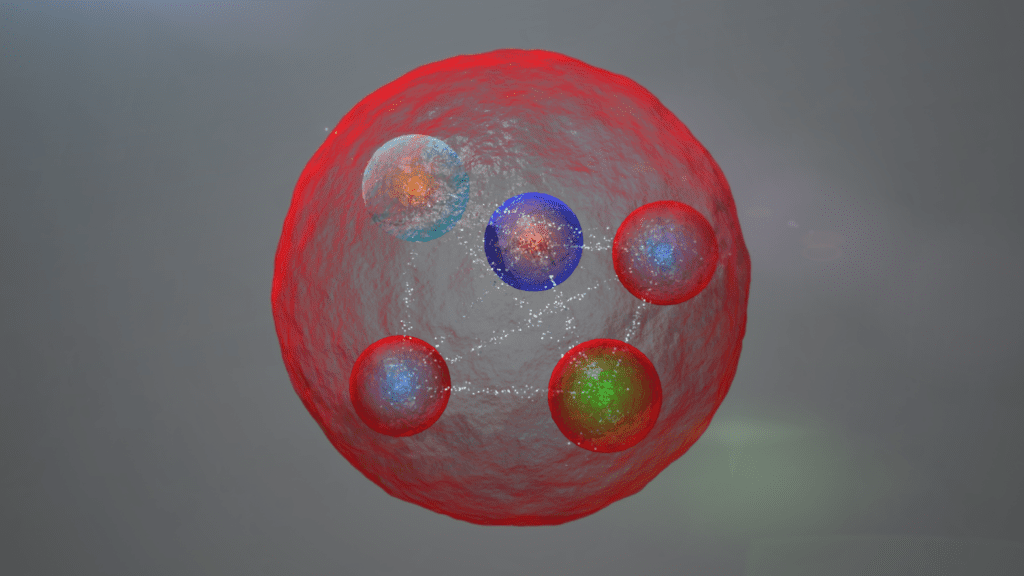
Scientists once thought that the atom was the smallest thing in the universe, but then they learned about particles like protons, neutrons, and electrons, only to later find that there are still even smaller building blocks. Quarks and gluons are, to the best of our knowledge so far, the fundamental building blocks of the universe, subatomic particles that are much smaller and operate at much higher energy levels than protons and neutrons, which are classed as hadrons.
Quarks combine in various configurations to form hadrons. Virtually all observable matter is composed of up quarks, down quarks, and electrons, and each proton and each neutron contains three quarks.
Now, physicists at the University of Pittsburgh and Swansea University have crunched the numbers from a recent experiment at CERN, the world’s most powerful particle collider, finding evidence for pentaquark states. Essentially, the data hints at new types of matter formed by four quarks and one antiquark.
Hadrons are explained by Quantum Chromodynamics theory, a high-energy physics framework first proposed in the 1970s that described the strong interactions and nuclear forces. But the problem is that this framework leaves many thorny, unanswered questions about the inner workings of quarks and the complex dynamics that give rise to nuclear forces.
“Quantum Chromodynamics is the problem child of the Standard Model,” Eric Swanson of the University of Pittsburgh said in a statement. “Learning what it says about hadrons requires running the world’s fastest computers for years, making it difficult to answer the dozens of questions this single experiment raises.”
For a long time, the consensus was that all hadrons are either a combination of a quark and an antiquark or combinations of three quarks. But then, in 2003, physicists at the Belle experiment in Tsukuba, Japan, found the first pentaquark, which was denoted as “X” because everything about it seemed unconventional. X is a combination of two quarks and two antiquarks. Shortly afterward, a similarly mysterious but different state turned up at the BaBar experiment at the SLAC National Accelerator Laboratory and was denoted “Y”. Subsequent exotic states seen at Belle and BESIII were dubbed “Z”, and more recently tetraquarks discovered at LHCb were labeled “T”.
It’s becoming a really crowded world in particle physics, with over two dozen pentaquarks and tetraquarks discovered thus far, each of which is unique with particular qualities. The latest particle to grace the list was discovered by the new study after the physicists examined a heavy particle called a Lambda b that decays to lighter particles, including the familiar proton and the famed J/psi, discovered in 1974.
The decay observed by the researchers can only be explained by the existence of a new type of matter.
“We have a model that explains the data beautifully, and for the first time, incorporates all the experimental constraints,” Burns said. The explanation requires the existence of several new particles that consist of four quarks and one antiquark, called “pentaquarks.”
“There is really no other way to interpret the data—pentaquark states must exist,” said Tim Burns of Swansea University.
Tetraquarks and pentaquarks are today seen as ‘exotic’, but so were protons and neutrons when they were first discovered in the early 20th century. There are now enough of these elusive and strange particles that scientists can begin grouping them together according to their properties, akin to the chemical elements in the periodic table. This would help physicists demystify Quantum Chromodynamics and gain a better understanding of the rules that govern exotic mass.
The findings appeared in the journal Physical Review.






